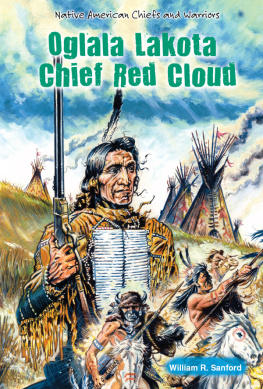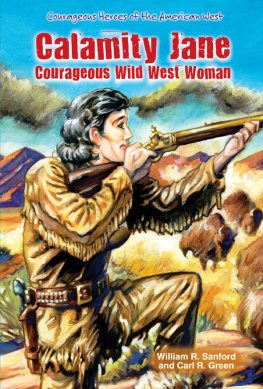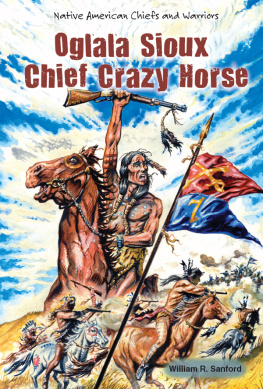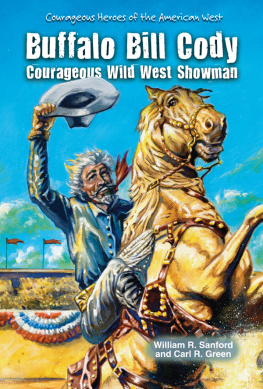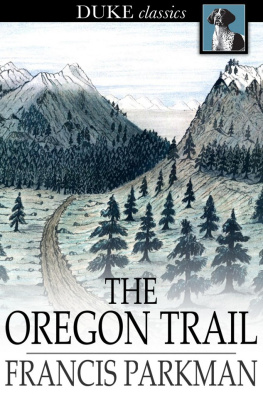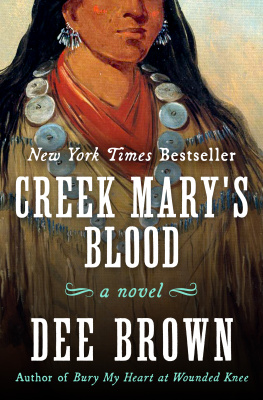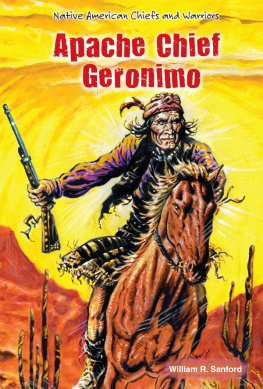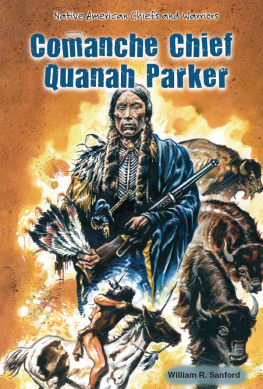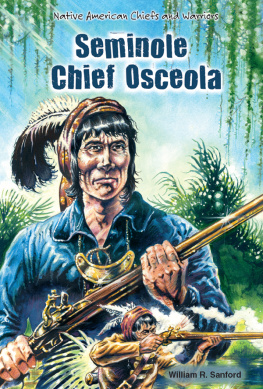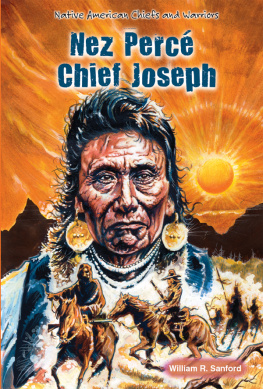Oglala Lakota Chief Red Cloud
In 1863, white settlers and gold miners crossed over the Bozeman Trail which cut through the hunting grounds of the Sioux in Wyoming and Montana. When the U.S. Army began to build forts along the trail, trouble began. Oglala Lakota Chief Red Cloud led his people fearlessly into a war for survival that eventually forced the United States Army to abandon its forts, and for many years, preserved Sioux territory.
The author tells the story of Oglala Lakota Chief Red Cloud, the only Native American chief to ever win a war against the United States government.
About the Author
William R. Sanford is the author of numerous books for young people. He brings many years of teaching experience to the books he has created.
This book tells the true story of the Oglala Sioux chief Red Cloud. Many mistakenly believe that his fame rests on one battle, the Fetterman Fight. His true fame, however, comes from his long-term struggle with the United States. After the discovery of gold in Montana, would-be miners swarmed across Sioux land using the Bozeman Trail. Red Cloud made sure they could never safely cross the trail.
Following his many victories, stories about Red Cloud filled the press. Some were fiction, but others were true. The events described in this book all really happened.
The wars between Native Americans and white settlers lasted more than 250 years. In only one case did the United States suffer defeat. The Native American who led his people to victory was Red Cloud.
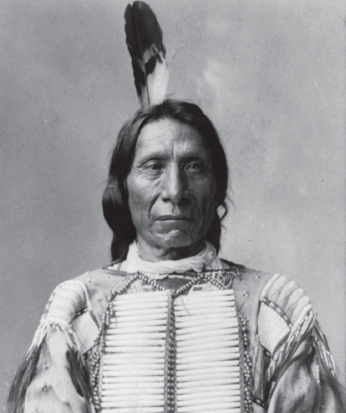
Image Credit: Library of Congress
The Oglala Sioux chief, Red Cloud, won his war to close the Bozeman Trail. He then led his people onto a reservation and lived for many years in peace.
On December 21, 1866, in his camp outside Fort Phil Kearny, Red Cloud waited. He waited for the medicine man who had ridden into the hills, inwardly searching. He wanted to find out whether the Sioux would kill any soldiers in the coming battle. The medicine man galloped into Red Clouds camp. He blew shrill notes from an eagle bone whistle. I have a hundred dead soldiers in my hands, he cried. Everyone cheered. The Sioux pressed forward to touch the medicine mans hands. Red Cloud was pleased; the medicine man was never wrong.
Red Cloud had a plan. Each day a wagon train left Fort Phil Kearny to get wood. A few of his men would pretend to attack this logging party. Then soldiers from the fort would come to its rescue. The decoy warriors would retreat slowly. They wanted the soldiers to follow them. The rest of Red Clouds men would lie in ambush. Red Cloud hoped the plan would work this time. It had failed a few days earlier when some of his young men had opened fire too soon. This caused the soldiers to stop atop a ridge. Then they turned back to the fort.
Red Cloud didnt know that this days trip for wood would be the last of the year. The soldiers had worked since mid-July, building the fort. Its eight-foot-high wooden wall was now complete. But the soldiers had almost enough firewood to last the winter. Colonel Henry Carrington was the fort commander. He sent a strong guard for this last trip.
The logging party left for the fort just after 10 A.M. An hour later a lookout signaled. Red Clouds men had attacked the wagons. Bugles sounded in the fort. An infantry company of forty-eight men quickly assembled. The soldiers carried single-shot muzzle-loading rifles. Their leader was Captain William J. Fetterman. He once had boasted, Give me eighty men and I would ride through the whole Sioux Nation.
When Fettermans force left the fort, the decoys broke off their attack. They retreated north over Lodge Trail Ridge. Fetterman followed to the top of the ridge. Crazy Horse and the other decoys galloped close. They fired at the soldiers, killing one. Then Fetterman ordered the soldiers to move north in pursuit. Two thousand Sioux lay in ambush ahead.
One Sioux reported, We held our horses mouths so they would not neigh at the strange horses.... Everything is still. There is only the clink of iron horseshoes against the stones.... The leading soldiers have reached the trail. Now they are between us. Little Horse signaled by shaking his lance over his head. Hundreds of Sioux warriors sprang from behind rocks. A cloud of arrows whistled toward the soldiers. Many were killed before they could fire a shot.
The soldiers fell back, making their way to a nearby ridge. Some found shelter behind boulders.
The firing lasted less than an hour. By that time the last soldier was dead. A soldiers dog ran up the trail toward the fort. Let him tell the other dogs at the fort what has happened here, Red Cloud said.
Lookouts warned that more soldiers were coming from the fort. The warriors melted away. Captain Tenedor Ten Eyck led the relief force. His men loaded the soldiers bodies into wagons. Then they returned to the fort and prepared for an attack. But that night a blizzard brought 20F weather. Instead of war, Red Clouds forces sought the warmth of their campfires.
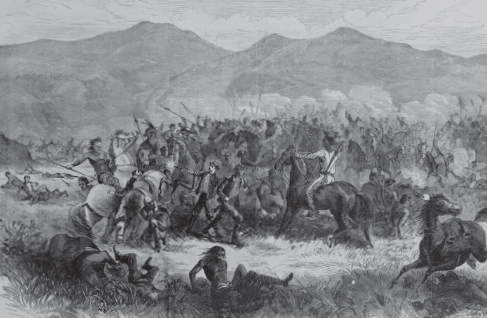
Image Credit: Library of Congress
Red Cloud planned the ambush near Fort Phil Kearny. His warriors destroyed a force led by Captain William Fetterman.

Image Credit: Enslow Publishers, Inc.
The Sioux were just one of many tribes living in the Great Plains. Because their territories overlapped, the tribes competed for the same resources. As a result, they often raided each others camps.
One winter night in 1822, the northern sky flared red with light. To the Sioux, this was a sign that a future chief would soon be born. That night Walks As She Thinks bore a son. Her husband Lone Man placed two arrows on the chest of the newborn babe. This was to make sure that the boy would grow up to be a brave warrior and hunter. From this act the boy gained his childhood name of Two Arrows.
Lone Man was a leader of the Bad Face band of Oglala Sioux. His wifes brother Smoke was their chief. The Sioux (pronounced soo) tribe got its name from the French. It came from a Chippewa word meaning enemies. The Sioux people called themselves Lakota, Nakota, or Dakota. In the 1800s, the Sioux occupied parts of what would become five states: North Dakota, South Dakota, Wyoming, Montana, and Nebraska.
Long ago, the Sioux lived in the southern United States. By 1600, they had moved north to southern Minnesota.
Later that century they came under attack from the Crees and Chippewas. Those tribes had gained their guns from the French. Slowly the Sioux began their move west. The Oglala band was one of the seven major Sioux bands. Oglala means Village Divided Into Many Small Bands.
In the late 1700s, a raiding party led by Standing Bull discovered the Black Hills. The Oglala band that settled there was smallperhaps twenty to forty families. Most of the Oglala traveled by foot. Later the band obtained horses from the Cheyenne. The Oglala began to use horses to hunt buffalo.
People spoke of the bands daring and its abundant supply of meat. Soon bold braves from other Sioux bands joined them.
The Oglala homeland was harsh. Its main stream, the Bad River, almost dried up in the summer. To the north stretched the Great Plains. By late May, the grass on the plains turned brown and dry. Prairie fires often filled summer skies with smoke. To the south lay the jumble of carved clay buttes called the Badlands. The explorers Merriweather Lewis and William Clark reached the Sioux homeland in 1804. They reported that the Oglala had only 360 people, including 120 warriors.

